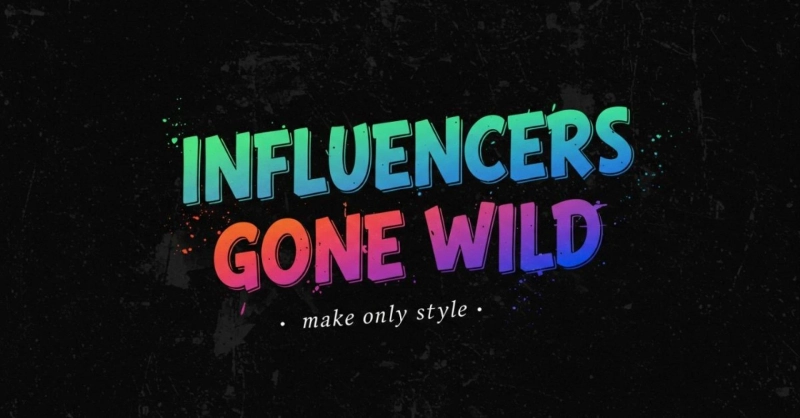Introduction:
In the fast-paced world of influencer marketing, trust, image, and relatability are everything. Brands carefully select influencers who align with their values, messaging, and audience expectations. But what happens when an influencer’s personal brand unravels in public?
The phrase “Influencers Gone Wild” refers to those explosive, often controversial moments when digital personalities behave unpredictably or unprofessionally—resulting in public backlash, scandal, or ridicule. These incidents don’t just affect the influencer’s image; they send shockwaves across the entire influencer marketing ecosystem.
Let’s break down how these viral moments impact brand collaborations, trust, marketing strategies, and the future of partnerships in the social media space.
1. Brands Are Held Accountable by Association
In today’s cancel-conscious climate, the public doesn’t just react to influencer behavior—they scrutinize the brands that fund them. When an influencer behaves badly, users are quick to ask:
● “Why did this brand work with them?”
● “Do they support this kind of behavior?”
● “Should I still buy from this company?”
The result? Brand reputation damage by proxy.
Real Consequences:
● Boycotts or backlash
● Negative PR
● Loss of customer trust
Even if a brand had no knowledge of the incident beforehand, silence or delayed response can make them appear complicit.
2. Influencer Vetting Processes Have Become Stricter
The “Influencers Gone Wild” trend has forced brands to dig deeper before signing on with a creator. Where once follower count and engagement rates ruled the game, now brands look for:
● Past controversies or red flags
● Behavioral patterns
● Mental health stability and professionalism
● Authenticity and ethical alignment
Many brands now use AI-powered background checks, hire influencer marketing agencies, and review content history before committing to a deal.
Brands Are Asking:
“Can we trust this creator to represent us—online and offline?”
3. Risk Management Now Shapes Campaign Strategy
Influencer marketing is no longer just creative—it's strategic risk management.
To protect themselves, brands are:
● Adding morality clauses in contracts (termination if influencer behaves inappropriately)
● Shortening contract durations (1-off posts instead of year-long ambassadorships)
● Diversifying influencer partnerships (micro, nano, and mid-tier creators to reduce risk)
● Requiring pre-approval of all content before it goes live
This cautious shift makes influencer marketing less spontaneous—but more controlled.
4. Micro-Influencers Are on the Rise
The fallout from high-profile influencer scandals has paved the way for micro- and nano-influencers—creators with smaller but more loyal audiences.
Brands have realized that:
● Micro-influencers are less likely to attract drama
● Their content is often more authentic and relatable
● They provide higher engagement rates and stronger ROI
In a world where a mega influencer can go viral for all the wrong reasons, brands are now more willing to spread their risk by working with multiple small creators instead of one big name.
5. Influencers Face Increased Pressure to “Behave”
In response to the new, stricter brand landscape, influencers are adjusting their tone, content, and public behavior—sometimes drastically.
This shift includes:
● Deleting controversial tweets or videos
● Turning off comments on certain posts
● Avoiding political or personal topics
● Adopting a more “corporate-safe” online persona
While some creators adapt well, others find the pressure stifling—leading to burnout or, ironically, more “gone wild” moments when they snap under the weight of curated perfection.
6. Crisis PR Is Now Part of the Deal
Brands and agencies are increasingly preparing for the worst.
This includes:
● Having pre-written public statements in case of scandal
● Training their marketing teams in digital crisis response
● Hiring PR professionals who specialize in influencer fallouts
This proactive approach signals one thing: Scandals are no longer a surprise—they're expected.
7. Trust and Long-Term Partnerships Are More Valuable Than Ever
In a volatile influencer landscape, brands are beginning to value consistency and professionalism above short-term viral hits.
Influencers who:
● Show reliability
● Avoid online feuds
● Maintain a respectful presence
● Stay transparent with their audience
…are now prime collaborators. Long-term, stable partnerships are back in style, and creators with a clean record are seen as safe investments.
8. Public Expectations Have Changed
Audiences are now more aware than ever of influencer-brand relationships. They don’t just want content—they want:
● Ethical partnerships
● Transparency about ads and sponsorships
● Creators who align with their values
When an influencer goes wild, audience backlash doesn’t stop at the influencer—it extends to the brand too. Today’s consumer wants to know: “Who are you working with—and why?”
Conclusion:
The “Influencers Gone Wild” phenomenon has reshaped the influencer-brand dynamic. What was once a fun, flashy marketing tactic is now a delicate balance of image, ethics, and public scrutiny.
For brands, the key takeaway is simple but crucial:
Influencer collaborations are no longer just about reach—they're about reputation.
And for influencers? The message is just as clear:
Your behavior is your brand—and it can make or break your business.
In an industry where trust is currency, one chaotic moment can cost more than a follower count ever earned.


